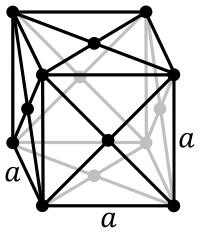
Photo from wikipedia
Radon (222Rn) is a natural radioactive gas formed in rocks and soil by the decay of its parent nuclide (238-Uranium). The rate at which radon migrates to the surface, be… Click to show full abstract
Radon (222Rn) is a natural radioactive gas formed in rocks and soil by the decay of its parent nuclide (238-Uranium). The rate at which radon migrates to the surface, be it along faults or directly emanated from shallow soil, represents the Geogenic Radon Potential (GRP) of an area. Considering that the GRP is often linked to indoor radon risk levels, we have conducted multi-disciplinary research to: (i) define local GRPs and investigate their relationship with associated indoor Rn levels; (ii) evaluate inhaled radiation dosages and the associated risk to the inhabitants; and (iii) define radon priority areas (RPAs) as required by the Directive 2013/59/Euratom. In the framework of the EU-funded LIFE-Respire project, a large amount of data (radionuclide content, soil gas samples, terrestrial gamma, indoor radon) was collected from three municipalities located in different volcanic districts of the Lazio region (central Italy) that are characterised by low to high GRP. Results highlight the positive correlation between the radionuclide content of the outcropping rocks, the soil Rn concentrations and the presence of high indoor Rn values in areas with medium to high GRP. Data confirm that the Cimini–Vicani area has inhalation dosages that are higher than the reference value of 10 mSv/y.
Journal Title: International Journal of Environmental Research and Public Health
Year Published: 2022
Link to full text (if available)
Share on Social Media: Sign Up to like & get
recommendations!